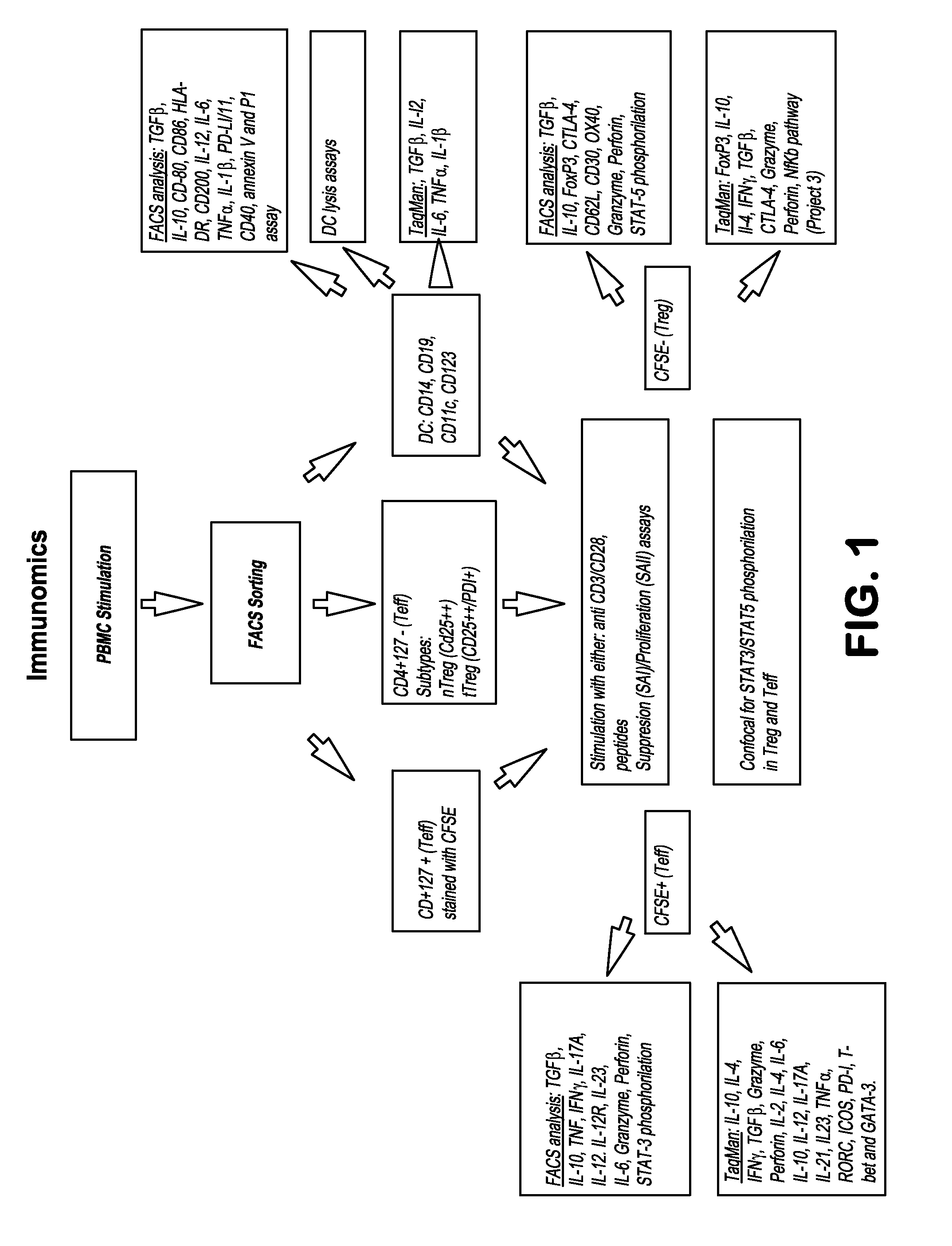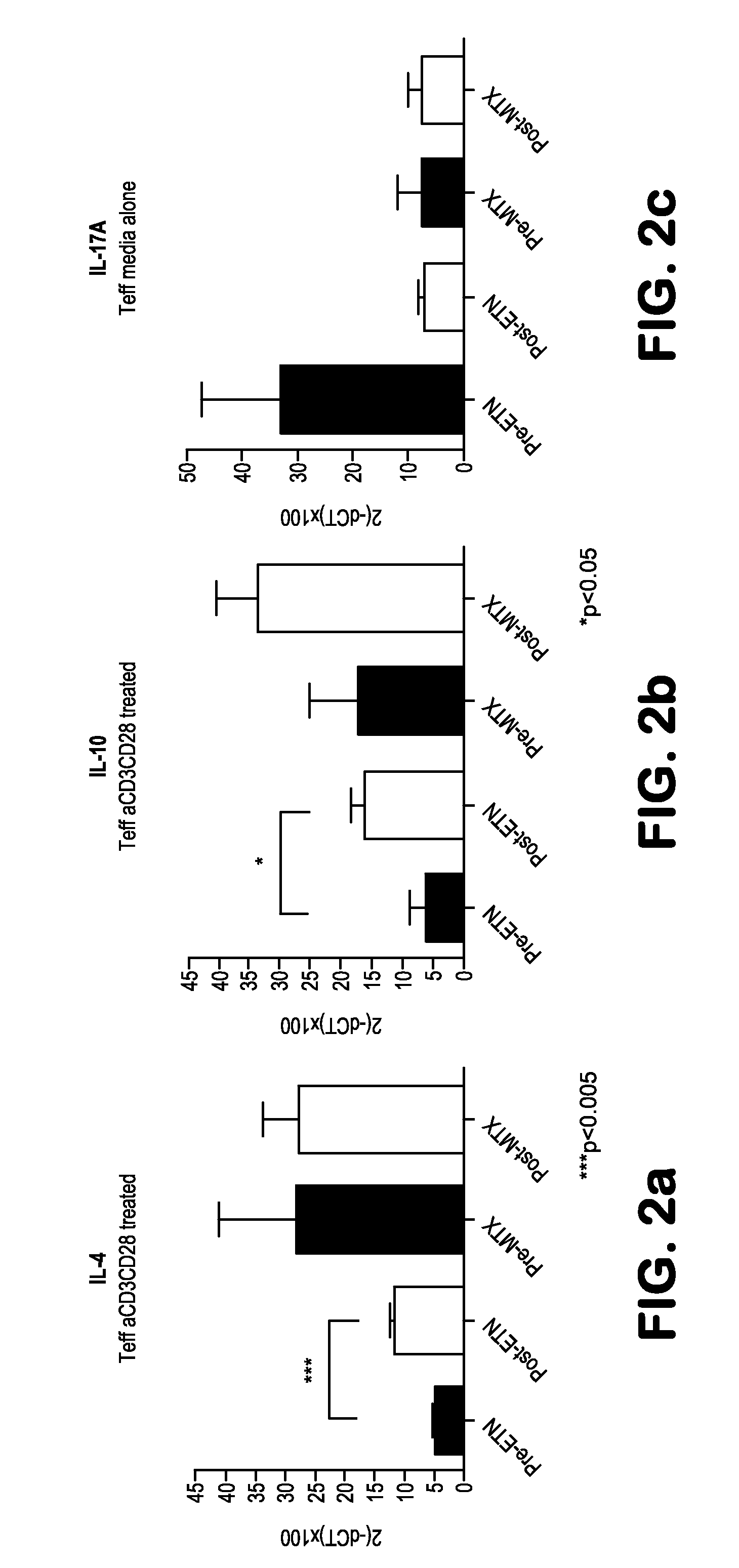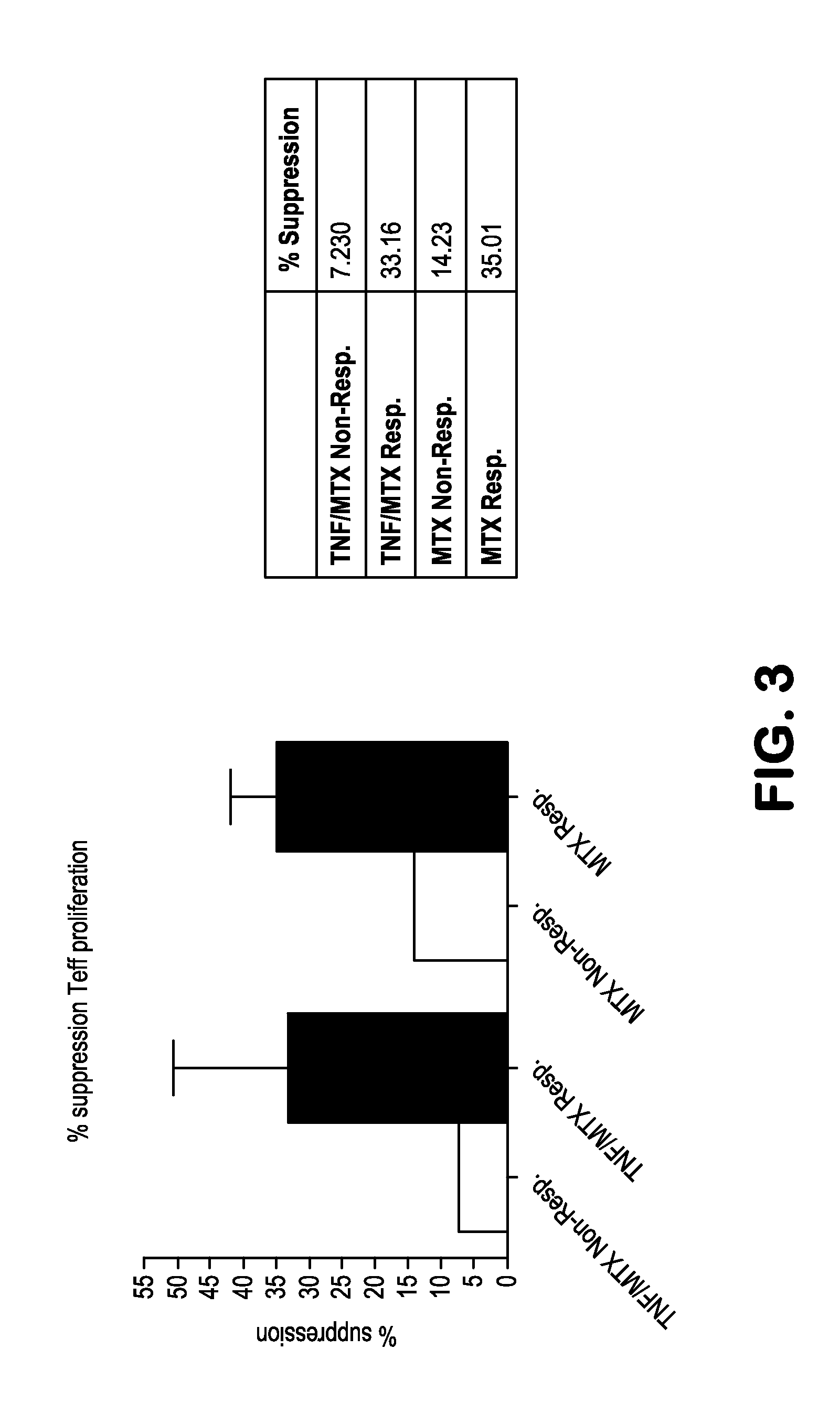Method for prediction of response to rheumatoid arthritis therapeutics
a rheumatoid arthritis and treatment technology, applied in the field of immune-mediated processes, can solve problems such as damage to the body and disease that cannot be cured
- Summary
- Abstract
- Description
- Claims
- Application Information
AI Technical Summary
Problems solved by technology
Method used
Image
Examples
example 1
[0068]The aim of this study is to identify clusters of immune pathways characteristic of responsiveness that are specific to treatment. The data below pertain to a preliminary study conducted in patients with RA, (n=8), who were first treated with methotrexate (MTX) and stratified based on clinical responsiveness based on Disease Activity Score of 3.2 (DAS3.2). Non-responders (DAS>5.1) were given an anti-TNFa (herein TNF or ETN) in addition to MTX. We show as summary a color coded table. We clustered individual immune functions according to cut off values identified in preliminary studies (25% change compared with baseline at active disease). The Table depicts the differences for patients who are all responders and therefore otherwise clinically indistinguishable (DAS 23.2).
[0069]PBMCs from each patient were incubated for 48 hours with plate bound anti-CD3 / CD28. Non-adherent cells were collected to enrich T cells by pan T-cell MACS. T cells were FACS sorted on CD4+CD127+(Teff) and C...
example 2
[0073]The TREAT study is a recently concluded clinical trial, which tested the difference between two treatment (MTX+TNFa antibody+prednisone+NSAIDS and MTX+prednisone+NSAIDS) arms in patients with active MA who achieved inactive disease (ID). Samples from most patients were collected and stored frozen at two time points: Initiation of treatment (T0) and end (Tend). The data below are from a set of 10 patients: 7 with ID and 3 with no ID in the same treatment arm.
[0074]PBMCs from the TREAT trial were thawed and a fraction immunophenotyped with a panel of markers using a 9-color FACSAria II. Any residual PBMCs were sorted for CD4+CD25low / negCD127+ effector T cells (Teff), CD4+CD25highCD127low / neg regulatory T cells (Treg), CD19+B cells, CD56+CD3−NK cells and CD8+T cells for functional assays. Teff and Treg were differentially labeled with vital dyes (CFSE and CTV respectively) to discriminate them, then stimulated with H134-148 peptide in the presence of autologous APC. After 2 days,...
example 3
[0079]Patient samples are collected from both a JIA study and a RA study. Both studies have two treatment arms: MTX+TNFa antibody+prednisone+NSAIDS and MTX+prednisone+NSAIDS. Samples are collected from time points T0 and Tend of both arms of both studies. Patients are stratified into groups based on response to treatment. The patient samples are analyzed using a gene chip for example. Genes which are expressed and genes which are not expressed are identified for the groups that responded to treatment. A signature marker profile is then identified based on the gene expression pattern and / or the DNA or RNA methylation pattern.
PUM
| Property | Measurement | Unit |
|---|---|---|
| confocal microscopy | aaaaa | aaaaa |
| phosphorescence | aaaaa | aaaaa |
| RA | aaaaa | aaaaa |
Abstract
Description
Claims
Application Information
 Login to View More
Login to View More - R&D
- Intellectual Property
- Life Sciences
- Materials
- Tech Scout
- Unparalleled Data Quality
- Higher Quality Content
- 60% Fewer Hallucinations
Browse by: Latest US Patents, China's latest patents, Technical Efficacy Thesaurus, Application Domain, Technology Topic, Popular Technical Reports.
© 2025 PatSnap. All rights reserved.Legal|Privacy policy|Modern Slavery Act Transparency Statement|Sitemap|About US| Contact US: help@patsnap.com



